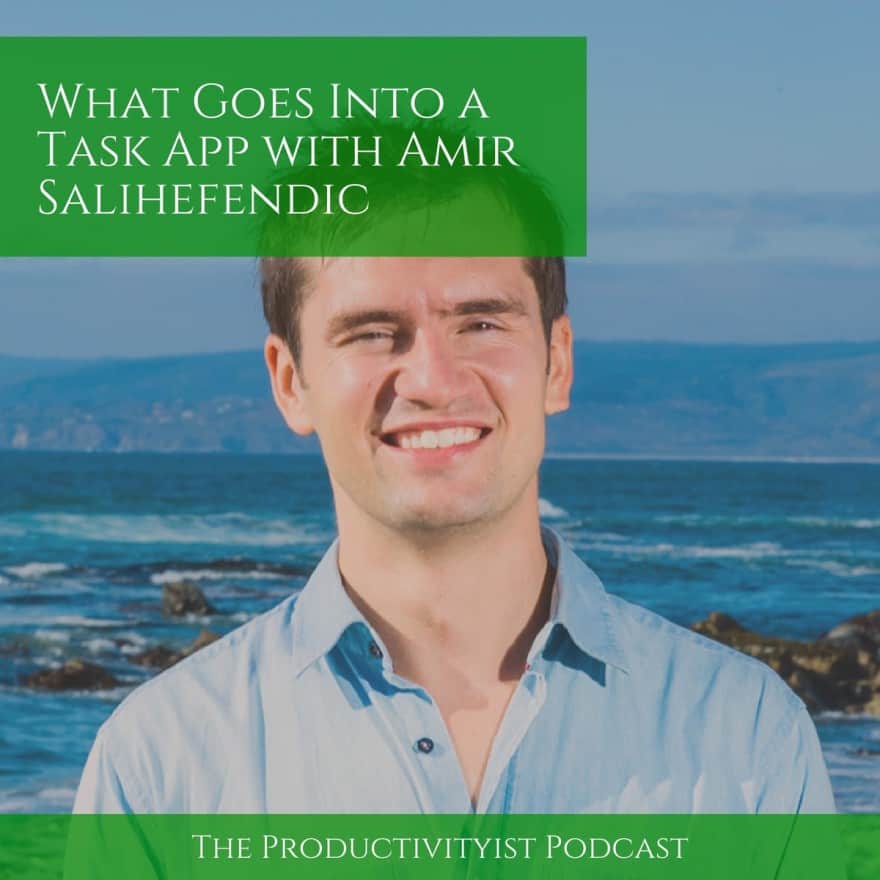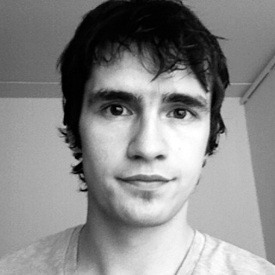Amir Todoist
- Todoist The top-ranked productivity app that helps millions of people organize work and life.
- Amir Salihefendic is the founder and CEO of Doist.io, the makers of Todoist, an online and mobile task management app. He started Todoist in 2007 when he was still a student with two programming jobs on the side. He needed a way to manage his own work.
- View Amir Salihefendic’s profile on LinkedIn, the world’s largest professional community. Amir has 5 jobs listed on their profile. See the complete profile on LinkedIn and discover Amir’s connections and jobs at similar companies.
I’m Amir, Founder and CEO at Doist, Creators of Todoist.
Part 1 – How a Neglected Side Project Turned Into a Multi-Million Dollar Startup
Amir Salihefendic is the founder and CEO of Doist.io, the makers of Todoist, an online and mobile task management app. He started Todoist in 2007 when he was still a student with two programming jobs on the side. He needed a way to manage his own work and productivity but couldn't find the right tool. So he decided to build his own tool. He didn't see it as a startup and he didn't have any big ambitions. It was just a tool.
Today, the company has over 4 million users and Todoist is also used by a number of Fortune 100 companies. And the tool that our guest built for himself has grown into a company with over 40 employees and several million dollars in annual revenue.
In this episode, we talk about how Amir abandoned Todoist, which was still a side-project when he accepted a full-time job with a startup. And how it took another 4 years before he recognized the opportunity to turn Todoist into a real business. He quit his job, started working on Todoist full-time and in 3 short years turned it into a 7-figure business with 40 employees.
Success Quote
- “One of the biggest and most important thing is having an important mission that you think helps other people or helps the world”
Links, Resources & People Mentioned
Contact Information
- Amir Salihefendic – @amix3k
- Omer Khan – @omerkhan
Recommended Podcast Episodes
“So this is it,” says Amir.
“Oh my god,” I say. My jaw drops.
His calendar is almost completely empty. There are meetings, yes, but they’re drifting like planets in outer space. They dot the darkened landscape but with unimaginably vast distances between them.
Amir continues to explain. He seems oblivious to my cosmic level of shock.
“This is a pretty busy week of meetings actually because our CTO is on paternity leave. I’m doing a lot of his final reviews of engineering hires. So this is actually more meetings than usual.”
I’m incredulous. I’m curious. Frankly, I am almost offended. He’s the CEO of an 80 person company and this — THIS — is his daily calendar? He’s got fewer meetings than Robinson Crusoe.

The question is: how does he do it? And why?
Amir Salihefendić is the founder of Doist. They make the popular todo app Todoist and the workplace communication platform Twist. He started Doist as a side project in 2007 and today he manages a fully remote team of 80 working across his two products.
I’m glad I talked to Amir for this interview, because he spoke directly to something I struggle with every day. As Nathan and I build out the Everything bundle, we’ve had to figure out how to balance creating an organization with doing our best creative work. Sometimes it feels like that’s impossible.
Amir Todoist Twitter
Creative work means being all alone in your room. Creating organizations means being in every room, all at once. It’s hard.
But after talking to Amir I realized that in the age of remote work, it’s actually possible. You can be alone in your room, and also in every room at the same time as long as you set things up properly. It takes some sacrifices, but if creative work is important to you it’s doable.
In this interview we look at how Amir uses Todoist to keep himself organized, how his company uses remote work and asynchronous communication to get more creative work done, and — yes — how he’s set things up so that he can manage a growing team of 80 with almost no meetings.
It’s a fascinating interview, so let’s dive in!
Amir introduces himself
I’m the CEO of Doist. We’re the makers of the popular todo app Todoist and the workplace communication platform Twist. Doist is completely bootstrapped — I started it as a side project in 2007. I never thought it would become a company, but we’re up to about 80 employees now. We are a fully remote team and have been since the beginning.
How I use Todoist
I’m a very big user of todo lists. I’ve used Todoist every day since I started building it, and I’m at about 60,000 tasks completed. I have everything inside of my Todoist: life stuff, work stuff, everything. I’ve used it probably every day since 2007.
This is my Todoist. I’ve done about 26 or so tasks today, and I have only one left.
One nice thing about Todoist is that it allows me to see where I’m spending my time. Each todo is assigned to a project, and Todoist graphs out which projects I’m working on.
You can see a a lot of my work is tasks where I have to respond to something in Twist or in email. Some of it is recurring tasks where I have to review things — for example we have what we call “snippets” at Doist where each team posts on a weekly basis what they’re working on. So I have recurring tasks to review those snippets. I even manage my social media posts — I add tweets I want to send as tasks to remind me to do them.
I spend much of my time learning
One of my biggest projects in Todoist is called Learning.
I spend a lot of my week reading through stuff — articles, newsletters, books, even videos. Everything that I’m going to read starts out as a todo in my Learning project. I schedule it for a particular day, and I check it off when I’m done.
I do this because a big portion of Doist culture is centered around growth. We are very focused on it. The best way to grow is to learn — and so if I wasn’t learning constantly I wouldn’t be part of the culture we have here. A big chunk of what I do is trying to learn as much as possible.
Honestly, I also just find it fun.
I’m looking for mental models that will help me be better at my job. For example, in Divinations you recently wrote a series on disruption — something like that is really relevant for anyone who runs a startup. I don’t know exactly what I’m going to use it for, but it helps me update my model of what I need to worry about, or what our opportunity is. Which is basically my job as the CEO.
As an extension of my own personal learning, I also have a project called Culture where I put any article or tweet that I think would be relevant for the team at Doist. For example, Lenny Rachitsky recently had a great article on B2B startups. So I put it in my Culture project and I’ll share it with the team in Twist in our Inspiration channel when I get a chance.
My todo list is pretty much always clean
One thing about me is that I’m very organized. That goes for my todo list and my inbox. For example, here’s my email inbox:
You can see it’s currently empty. It’s kind of OCD.
I used to be messy earlier in my life. But honestly, especially as the company has gotten bigger, it creates a lot of stress for me if I’m messy.
So everyday I try to hit todo list zero and inbox zero and when I’m at both of those places that’s how I know I’m done for the day. If I don’t do it then it makes me feel guilty and it’s hard to relax.
Of course, I don’t complete everything on my todo list every day or respond to every email in my inbox every day. Sometimes I’m just postponing stuff that I didn’t get to.
How I work through my todo list
Whenever I add a task into my Todoist I add a project, a date, and a priority to it. Having a date helps me make sure I’m getting things done on time, and adding a priority lets me know whether or not it’s something I absolutely have to get done on a particular day.
In the morning when I get up I check my Todoist, and I’ll have a list of all of the tasks I need to do that day. This is what it looks like:
The priority one tasks are on top, and those are critical. Then I have a bunch of recurring tasks set to priority two — these are critical but maybe not that critical. For example, inbox zero and my daily workout are priority two.
Then below that I have all of the other stuff that I can do if I get the time, but aren’t critical. So in the morning I just head to the priority one tasks and start to work on them. I’ll usually try to group similar tasks together, so if I have a bunch of tasks in my Review project I might do those all at once before going on to other things.
I try to do creative work in the morning — so that’s either writing or programming. That’s when I’m the most fresh.
Then at the end of the day I’ll go in and postpone any tasks that I haven’t gotten done. I do have days when I don’t get everything done — especially because now I have two small kids. So sometimes if I haven’t slept a lot, I just can’t get everything done for the day and I’ll postpone it.

But the nice thing about our remote work setup is that if I need to go and take a nap in the middle of the day I can do that.
I use Todoist for my 1-1s too
One big super hack is I use Todoist for my 1-1s. Each person that I manage I create a shared project for them.
This is great because it allows you to set an agenda, and also have shared action items. It makes it very easy to go back and look at the agenda from past meetings, and see what got done and what didn’t.
This has been a huge boost for me in managing people.
How Doist does its work
We are remote-first and fully distributed. We have been since the beginning, and we think it is the future of work. We have people spread around 34 or 35 countries.
Because we’re remote first and international, the way we communicate is very different. The whole company runs asynchronously — so there’s no expectation that you’ll get an immediate response to a question.
But this has a number of advantages. It means we don’t do many meetings. It also means
that each employee gets to plan their days as they want. It’s a huge advantage because it allows you to plan your work around where you have the most energy and ability to focus — not around a 9 am to 5 pm schedule.

How I keep my calendar empty
This is my calendar.
This is a pretty busy week of meetings actually because our CTO is on paternity leave. I’m doing a lot of his final reviews of engineering hires. So this is actually more meetings than usual.
We make this work because we’re asynchronous. That means most of our communication happens in written form, rather than being verbal.
There’s no meeting culture inside the company. We don’t say, “Let’s have a meeting to discuss this.” Sometimes it happens of course, but it’s usually when we really disagree strongly about something. In that case a meeting helps. But otherwise, it usually doesn’t happen.
The other thing we tend to have meetings for are 1-1s and check-ins. Our teams will generally do at least one check-in per week to get everyone on the same page to make sure things are working. But that’s it.
Many companies do meetings more frequently, but I think you pay a high price for those kinds of things. It’s understandable, but especially for us, we have people in so many different time zones that it would be very hard to do.
The advantage of this style of asynchronous communication is that it allows us to disconnect when we want to. Being able to disconnect allows you to manage your stress levels and your energy levels, which is very important especially for me. For instance, I can go and spend two hours with my kids in the middle of the day without feeling the urge to go and check Twist or emails because I know it can wait.
Our CTO has a similar story. He’s a night owl. He works a lot from 9 PM to 3 AM. That’s when he gets his energy. But that’s never been a problem because we’re all asynchronous. So it’s a very different work environment, I think.
We use Twist to help us avoid meetings
A lot of our communication happens in written form, on the tool that we developed for this — Twist.
Twist has a lot of design patterns that promote this. For example, there are no online indicators in the product. Also, the text input is designed for long-form communication, rather than short messages going back and forth. So it encourages thoughtfulness.
Twist works like a combination of Slack and email. Twist has channels like Slack, but inside of channels are what we call Threads — which are kind of like email threads. Each thread is on a topic, and people can discuss back and forth on the topic inside of the thread.
Inside of Doist we work in cycles — which are like month-long work sprints where we’re working on a single project. Each project gets assigned a channel, and all of the relevant team members are added to that channel for the length of the project.
We have very few private channels, which means that at Doist all of our information is default public. That makes it easy to see what other people are working on, and it allows employees to have input into parts of the company that they might not otherwise get to see. It’s a very democratic process of suggesting and building ideas.
Why remote-first asynchronous work is important to me
I think this is important because the work we do is very creative. In order to do creative work you have to manage your energy and set up your life to allow creative moments to happen.
It’s not about banging on the keyboard for 12 hours a day. It’s about getting great ideas and having the energy to go and do them. You can make something great in just a few hours — it’s not really about the amount of time you’re sitting in front of your screen.
Amir Todoist
We just try to create an environment where you can make great stuff.
For me, it’s actually very important not to be stressed and to be reflective. This means I need to have space, because that’s the only way to make decisions.
So I try to work 8 hours a day. Sometimes more, and sometimes less. Right now I’m working less because of the pandemic.
What did you think of this article?
Amazing - Good - Meh - Bad

Want to make this interview more actionable? Consider becoming a Superorganizers member through the Everything Bundle:
We’re striving to make Superorganizers Premium everything you need to live a productive life.
When you become a member you’ll get:
Superorganizers comes as a bundle, so when you subscribe you also get access to 3 other newsletters: Divinations, Praxis, and Napkin Math.
Can’t afford a subscription for any reason? Email me and we’ll work something out!
What did you think of this post?
Don't have an account? Sign up!
